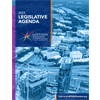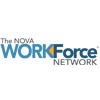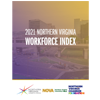 For more than 50 years, a year-long resume gap was a clear red mark against a job applicant. Except for stay-at-home parents or applicants who went back to school, there really wasn’t much sympathy from an employer, even in recessions.
For more than 50 years, a year-long resume gap was a clear red mark against a job applicant. Except for stay-at-home parents or applicants who went back to school, there really wasn’t much sympathy from an employer, even in recessions.
The COVID-19 pandemic has changed all that. One or two years out of work is the temporary new normal as the economy rebounds from whole industries being shut down, and uneven recoveries thanks to supply-chain issues, unemployment insurance provisions, and The Great Resignation’s new opportunities. But many employers are still stuck in old mindsets – mindsets that could cause them to miss out on great staff and better growth. Helios HR CEO, Kathy Albarado, and her team have helped clients navigate this new reality for months. She shares her suggestions on navigating the pandemic-era resume gap below:
1. How should employers react to an applicant who seems qualified, but whose resume has a lengthy pandemic-era gap? Given the recruitment and retention challenges that face many employers today, if the candidate has the required skills, and is otherwise a candidate of interest, reach out to the candidate to have a conversation. Don’t immediately discount anyone for employment gaps without having a conversation.
2. When reaching out to said applicant, what should be the hiring manager's strategic mindset to gain information about the reason for the gap? A mindset of seek first to understand. Employers need to be open and empathetic to the fact that the pandemic created many unique situations that people could not have anticipated. Gaps may reflect the need to stay home if they contracted Covid-19, to take care of loved ones, and/or to help children navigate their online school attendance. Additionally, gaps may not be Covid-related. We live in a region where people frequently take jobs as 1099 contractors or obtain work in this gig economy, and may not formally “list” it on their resume.
The pandemic has created a new mindset for many people. I believe it has encouraged many to adjust their priorities to seek a stronger, purpose-driven life. With the stress and increased anxiety that many have experienced, more people are taking personal time to address their own mental health. This may appear differently on their resume. Again, if we don’t give them the opportunity to explain the gap(s), we could be leaving a very talented candidate behind.
3. You’ve laid out many reasons for pandemic-era gaps, and there are others – such as receiving unemployment assistance or being in an industry which took two years to start hiring again. What information should a manager seek to determine the personality and mindset of the applicant, related to how the applicant handled the gap? The employer should ask directly about any concerns regarding the gap(s) or circumstances that may have contributed to the break in employment. Remain objective and ask fair, probing questions that can help give you insight into the candidate’s motivation. For instance, if during the gap, the candidate took classes, training, or did something to develop themselves, that would be a very positive sign.
4. Younger workers tend to jump from job to job, in addition to having a pandemic-era resume gap. What information should a manager seek to determine a younger applicant's "soft" qualifications for the job, such as personality, value for the cost and effort of training, and embracing company culture? Asking a candidate to share their own career expectations is always a great conversation to have. Find out what their short-term and long-term goals and objectives are. Do their goals and objectives align with what your company can realistically offer them? Let’s say they want to become a manager in the next 3-5 years, can your company offer them a career path and development to align with that goal? We find that learning and development, defined career paths, mentorship programs, and consistent feedback are especially sought by younger generations. Knowing that the company will make investments in their future will help them feel connected to the organization and accomplish mutual goals together.
At Helios, we have several Millennials on our team, they have a solid retention history with us, and they are great performers. If you are hiring the right people and have a strong and supportive culture, then job-hopping is far less likely to occur.
Lastly, keep in mind that we are currently in the “Great Resignation,” with turnover at an all-time high in our country. Typically, people are leaving because a) the culture isn’t as it was advertised or there is an unhealthy relationship with their manager; b) there’s limited growth opportunity; c) employees are seeking higher compensation; or d) they’ve found a new passion or purpose. And for some industries and positions, such as IT, a 2–3-year tenure is standard in the market. There are a lot of factors to consider when reviewing a candidate’s resume, and we shouldn’t assume anything without getting clarity during the interview.
5. From the applicant's point of view – upon receiving an interview call because of skills on the resume what are the top three characteristics he or she should seek to highlight to overcome a lengthy pandemic-era gap, especially on top of a pattern of jumping jobs? There is a new school of thought regarding candidates who move from role to role; it’s being termed the “Great Re-invention.” The top three characteristics to highlight are 1) they have the ability to assimilate quickly; 2) they readily pick up new information to grow professionally or personally; and 3) they are exposed to an increased variety of experiences and viewpoints. Candidates should be forthcoming with the reasons the gaps exist and they should indicate how this impacts their job readiness. For instance, they should highlight if they spent time volunteering or doing something for the community, perhaps they needed to reset their personal goals and went back to school, or developed new skills/certifications. These would all be important factors to disclose to potential employers.
6. What are the top three disqualifying characteristics a manager should look for when considering an applicant with a lengthy pandemic-era employment gap? It will be situational and up to the employer to determine if the gap is or isn’t acceptable based on the candidate’s response. However, some factors we think can be red flags are if the candidate can’t explain or articulate why they have a gap in employment, or if they refuse to share why they left their former employer.
7. With so much cultural support provided to those with pandemic-era gaps, how can a company protect its brand from public criticism by a disgruntled candidate who was turned down for reasons related to pandemic-era gaps? It's all about how you respond to the candidate when you are letting them know that you’ve decided not to move forward. It may not even have to do with the gaps in their employment, but rather that you found a more qualified candidate for the role. The most important consideration to keep in mind is how you make someone feel. Treat them with respect, dignity, and kindness and you shouldn’t have a disgruntled candidate on your hands. And if some reason they do give you a bad review on Glassdoor or another site, respond immediately. People are generally understanding.

 This Member Q&A Blog post is the result of a discussion between Chamber members, Kathy Albarado, CEO, Helios HR, and Dustin Siggins, Founder, Proven Media Solutions.
This Member Q&A Blog post is the result of a discussion between Chamber members, Kathy Albarado, CEO, Helios HR, and Dustin Siggins, Founder, Proven Media Solutions.















